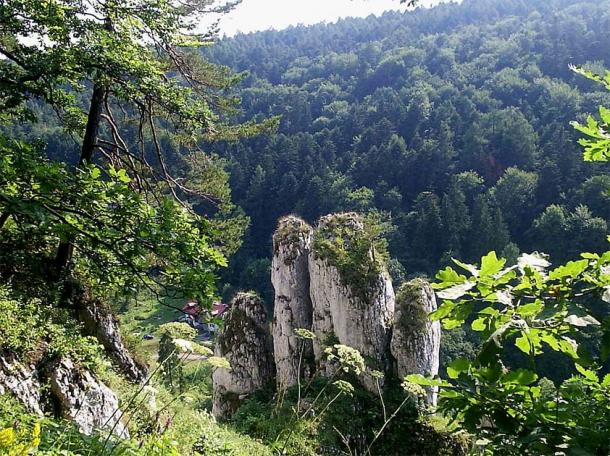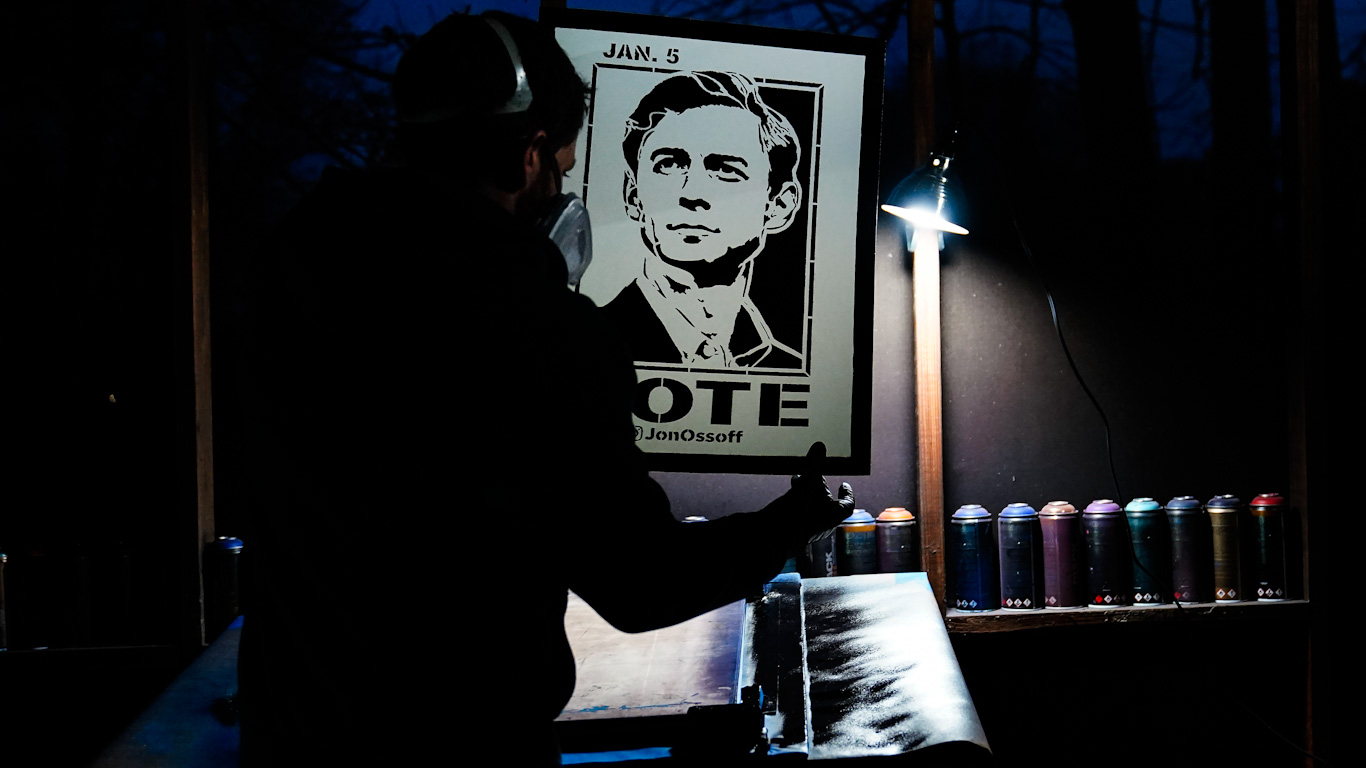Between the 18th and 19th century in Poland, a child was given an unusual burial within the Tunel Wielki Cave. A ritualistic burial like this surely would have been a spectacle, however, all information about the child and chaffinch skulls has been lost.
While rummaging amongst some dusty boxes filled with artifacts from old research projects at the University of Warsaw, Dr. Małgorzata Kot came across the aforementioned human remains. Stumbling across the skeleton was a surprise in itself, since the original researcher, Professor Waldemar Chmielewski had chosen not to publish the discovery.
The child’s skeleton was found over fifty years ago with a chaffinch skull inside its mouth, and another next to its cheek. The use of shallow graves within caves, was a burial practice that dates back at least 4000 years. However, the radiocarbon of the bones reveals a hard life riddled in malnourishment and places the child’s death sometime between 1750 and 1850 AD.
Why was the burial hidden for so long? Who was this child and who buried them? Could these be the remains of a family ritual or something much more sinister? Current researchers are attempting to answer these questions and more.

Dr. Malgorzata Kot came across the mysterious remains while looking through artifacts from old research projects in the storage rooms of the University of Warsaw. (Małgorzata Kot / University of Warsaw)
Understanding Poland’s Complex History
The history of 17 th and 18 th century Poland is complex and filled with violence, famine and power struggles. After the 1560s, the Polish-Lithuanian Commonwealth was created. In the late 1700s the commonwealth had three major players, including Prussia, Russia and Austria, effectively taking away Poland’s independence. Eventually Poland was erased from European maps, much like this child’s story.
The partitioning of Poland by different political powers necessitates examining the location of the Tunel Wielki Cave. This burial took place in Kraków-Częstochowa Upland, within the forested area of the Sąspowska Valley. This highland area contains beautiful rock formations and dozens of caves utilized in prehistoric times. These facts of ancient history were probably not in the forefront of the minds of the tortured citizens of mid-18th to early 19th century Krakow.
The early 1700s brought destruction and devastation in and around Krakow. The Swedish army seized and partially burned the historic Wawel Castle. These ruins were left to rot as Prussian and Russian invaders continued their destruction. In 1772 this area was controlled by the Austrian army, with orders coming from Napoleon himself until his eventual downfall.

The Tunel Wielki Cave is located within Ojców National Park. There are over 400 caves within the area which is also known for its rock formations. (Jan Jerszyński / CC BY-SA 2.5 )
Continued Struggle for Polish People
In the 1800s Poland attempted to steal its identity back. The region of Krakow became a symbol for spiritual and traditional Polish culture. Unfortunately, Poland remained abolished from the maps of Europe until 1918. Between the late 1700s and 1860 Poland saw military revolts, protests and attempted social reform. The political and social reform effort granting citizens of the Polish-Lithuanian commonwealth was thwarted by Russian and Prussian troops.
The child discovered at Tunel Wielki Cave likely suffered greatly at some point between the 17th and 18th centuries. It may have borne witness to violence throughout its short lifetime and probably starved to death. Could the child have sought to fly away from it all, yearning to escape such hardships? If so, its loved ones would have remembered the child’s fondness for freedom or chaffinches. This hypothesis could explain the symbolic use of the the bird skulls, but this remains pure speculation.
This tumultuous time saw many deaths and subsequent burials. It is estimated that most peasants and urban citizens were buried in cemeteries associated with their own religion. During the time in question, it was unheard of for anyone to be buried outside a cemetery, and preposterous that a modern human would be buried in a cave.

Madonna with child, with goldfinch in his hand, attributed to Taddeo di Bartolo. (Sailko / CC BY 3.0 )
Exploring Bird Imagery and Symbolism to Understand the Mysterious Burial
The commonwealth of Poland-Lithuania housed many immigrants prior to the 18th century. This country boasted tolerance, scientific discoveries and welcomed all. This led to the coexistence of many different religions, from the native Slavic paganism , to Judaism, Christianity, and Catholicism. Each of these religions use bird imagery in different ways. From chickens to ravens, birds appear to symbolize faith throughout history.
Slavic mythology contains clues to understanding this child’s burial. According to researchers, there is a particular myth related to a bird, likely a raven or crow. This bird could bring the water of life or death to a body, and the soul of the deceased would rise again in their previous body. There are many myths claiming that birds were the spirits of fallen humans or could bring a cycle of reincarnation. Could it be that the child’s loved ones were hoping to bring him or her back to life? Or, were they attempting to set its spirit free?
Many cultures consider birds to be a symbol of freedom. In the Middle Ages many religious paintings included depictions of a chaffinch. The bird was present in imagery of saints or of Jesus Christ. This bird appeared in art when death was a subject of the painting. This iconography symbolized the freedom of the soul upon death. Relatively recently, bird skulls have gained popularity and have been said to symbolize acceptance of fate and freedom in death. Could it be that this current trend was inspired by some deep subconscious associations?
It’s a Conundrum: Issues Facing Researchers
The ancient ritual of cave burials were popular amongst prehistoric populations. There is evidence of Neanderthals burying their dead in caves approximately 50,000 years ago. Paleolithic and Neolithic tribes also utilized caves as cemeteries. In fact, the dozens of caves in the Sąspowska Valley were home to Neanderthal tools and Paleolithic human remains. Unfortunately, these sites were disseminated by farmers who used the soil from caves as fertilizer. This kind of contamination of the site has led to questions about whether or not this burial site could in fact have been from an earlier time. However, the radiocarbon date has confirmed this child was in fact a modern human buried in a mysterious way.
The use of the cave’s rich soil by local farmers over the years means that it is impossible to fully understand the burial site due to lack of archaeological evidence. This type of industrial use of the caves has been banned for decades now, but it is near impossible to find unspoiled archaeological context for this burial.

Girl weeping for her dead bird, a 1759 painting by Jean-Baptiste Greuze ( Public domain )
Will They Ever Solve the Mystery? Answers Buried in Time
The chaffinch skulls were originally examined by scientists who were unaware of their relation to a human burial. Recently scientists examined the small bird skulls again and found that both birds were adults and lack any sign of cuts. This likely rules out the possibility of the child having eaten the skull of the Chaffinch or of the bird being alive when the skull was placed in their mouth. This points to ritualistic behavior, or at the very least someone deliberately placing these chaffinches and child in the Tunel Wielki Cave.
But that’s not all! The researchers have also had to deal with a further hurdle in their quest for answers: the child’s skull is missing. Soon after the original researchers excavated this cave, they sent the skull to anthropologists in Wroclaw for further analysis. The current whereabouts of this skull remains a mystery to everyone involved, and only time might reveal the location. Despite this hinderance, researchers at the Institute of Archaeology at Warsaw will be conducting DNA analysis on the remaining skeleton.
So, was this burial inspired by a loved one’s faith in mythology? Was it part of an unknown ritual? Could it be related to the Middle Ages portrayal of both chaffinches and finches? Or are these the remains of a sinister crime? The case remains as open as the plethora of interpretations. Perhaps someday, the child’s bones will speak more eloquently thanks to advances in science, allowing researchers to find the answers needed to unravel this particular enigma.
Top image: Dead Bird by Albert Pinkham Ryder. Source: Public domain
References
Dixon-Kennedy, Mike. 1998. Encyclopedia of Russian & Slavic Myth and Legend . Santa Barbara, Calif: ABC-CLIO. Available at: https://search-ebscohost-com.libproxy.csun.edu/login.aspx?direct=true&db=nlebk&AN=56852&site=ehost-live
Hutchinson, G. Evelyn. 1974. ” Attitudes toward Nature in Medieval England: The Alphonso and Bird Psalters .” Isis 65, no. 1 (1974): 5-37. Available at: http://www.jstor.org/stable/228879
Natgryczewska. January 26 2019. “Tunel Wielki Cave – Sąspowska Valley in Prehistoric Times.” Sapowska Valley in Prehistoric Times . Available at: http://www.dolinasaspowska.uw.edu.pl/en/tunel-wielki-cave/
Starr, Michelle. December 3 2018. “Bones of a Child With Something Bizarre in Its Mouth Have Been Found in a Polish Cave.” ScienceAlert. Available at: https://www.sciencealert.com/the-bones-of-a-child-were-found-buried-in-a-cave-in-poland-with-the-skull-of-a-bird-in-its-mouth
Team, Tattmag. July 2019 2020. “Bird Skull Tattoos: Origins, Meanings, Symbolism & More.” Available at: https://tattmag.com/bird-skull-tattoo/
Than, Ker. October 4 2017. “Neanderthal Burials Confirmed as Ancient Ritual.” National Geographic . Available at: https://www.nationalgeographic.com/news/2013/12/131216-la-chapelle-neanderthal-burials-graves/
Zdziebłowski, Syzmon. November 26 2018. “Małopolskie/ Bird Skull Found in the Mouth of a Child Buried in a Cave.” Science in Poland . Available at: https://scienceinpoland.pap.pl/en/news/news,31838,malopolskie-bird-skull-found-mouth-child-buried-cave.html
May 28 2018. Poland Profile – Timeline . Available at: https://www.bbc.com/news/world-europe-17754512
May 25 2012. History of Krakow . Available at: https://www.krakow.pl/english/5423,artykul,history.html
Related posts:
Views: 0
 RSS Feed
RSS Feed

















 October 14th, 2020
October 14th, 2020  Awake Goy
Awake Goy 



 Posted in
Posted in  Tags:
Tags: 
















